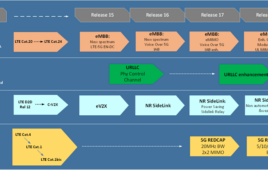Mobile device management is a fragmented but growing niche.
Its many aspects can be difficult for enterprise customers to fully grasp.
What’s the future of mobile device management (MDM)? Advocates say that mobile applications and device content will meld to corporate policies, while end users could acquire a new device, immediately connect to a network and directly import an entire environment of applications and security. Enterprises will have tools for mobile expense management, mobile security will be integrated into mainstream IT security and all users will have huge amounts of remote  customization options, while wireless operators may have little influence on the whole process.
customization options, while wireless operators may have little influence on the whole process.
That’s a long way from the current reality of MDM, where most network operators and independent software vendors deploy over-the-air upgrades, offer a security feature or two and call it day.
Some operators such as AT&T and some vendors such as Microsoft and Research In Motion offer a bit more such as data backup tools, integration with existing enterprise network management systems and support for industry standards such as the Open Mobile Alliance’s (OMA’s) SyncML specifications.
But as with any new technology, there’s a gap between reality and future promises, industry analyst Stephen Drake, of IDC, wrote in June 2007 in his MDM report, “From FOTA Updates to Next-Gen Device Management Applications.”
“The growing trend is to develop additional functionality that begins to offer new revenue-generating services that mobile operators and mobile device manufacturers seek. Security, backup and restore, and software and workflow management are a few examples, and vendors in this space market their platforms as key components for these next-generation applications and services,” Drake wrote.
Abraham Joseph is one voice in a growing industry effort to fulfill that trend. Joseph is a consultant who previously worked for British Telecom and Nortel, followed by a career at Gartner and Ovum. He now runs the Devices Management Forum with the idea being to involve all stakeholders, especially end users, in the process of education and industry advocacy. The forum plans to publish white papers, be a resource for device management topics in vertical segments, host an online marketplace and encourage MDM customers to share experiences with each other.
Device management is a much more acute problem for mobile devices than for PCs and servers, because PCs and servers generally don’t leave the building. Even the lessons learned from laptop management don’t fully cover mobile devices because laptops usually lack always-on wireless connections to the outside world, Joseph said. Automated discovery tools can be part of the answer and Microsoft’s acquisition of Portuguese software company MobiComp this summer was good news for MDM advocates within corporate IT shops, he said.
There are similar considerations for the security aspects of MDM. As mobile devices start shipping with Wi-Fi support, the traditional network security companies are realizing that smartphones must be treated different from laptops. A laptop could be used in a drive-by attack, whereas a mobile phone could simply be brought into a building without anyone questioning it. That is why AirDefense, acquired by Motorola this summer, is gradually moving from IP network security for PCs and servers into the mobile security realm.
“As the market moves more toward fixed-mobile convergence, and cell phones are delivered with dual-band radios and become part of the wireless infrastructure, you will see those markets evolve… you will see a much deeper level of integration,” CEO Michael Potts said. He declined to share details about the Motorola roadmap, however. Motorola’s Good Technology subsidiary also offers security services, so some amount of technology sharing will be considered as AirDefense merges into its new corporate family. “We’re just at the tip of the iceberg of where vulnerability management is,” compared to the greater MDM field, he explained.
Another area of next-generation device management applications exists in the subset of expense management. As much as modern smartphones are truly computers, the devices are still, of course, telephones. So applications are needed that help companies track not just bills, but also content downloads, instant messaging, ringtone purchases and more.
It’s quite different from traditional telecommunications expense management. An example is Rivermine. The company’s background is in the traditional side, which led to the acquisition of BBR Wireless Management in Fall 2007. Jim Carroll led BBR and is now executive vice president of Rivermine. Most companies own large amounts of wireless devices spread across multiple carriers’ networks, so using third-party software can help organize the bills and turn a spotlight to where savings may exist, he explained. Rivermine also supplies its service to Accenture and IBM. Carriers also typically offer similar tools to their enterprise customers, but without the obvious advantage of network agnosticism.
MOBILE VS. TRADiTIONAL
There are several differences between traditional telecommunications expense management and mobile expense management, Carroll explained. Mobile users make calls from other countries, download content, and phones can be lost or stolen. None of those issues are relevant with stationary desktop phones. Rivermine’s upcoming versions will have international support and integration with more generic business management software from companies such as Ariba and Katera Technologies. The company is also considering technology to help manage mobile software. “That’s kind of a new area where I think the enterprise IT departments are starting to get more comfortable outsourcing those kinds of activities. That’s one thing we see as a nice synergy with our partner IBM,” he said.
Policies, security and cost management probably sound familiar to veteran IT managers – that’s because many of the new ideas in MDM are borrowed from existing and previous trends in computer management, especially on the enterprise side. As mobile devices become less like portable telephones and more like small computers, it makes sense that supporting technologies follow.
Yet companies in the market for an MDM supplier need to understand that no approach is perfect, said Dan Croft, CEO of Mission Critical Wireless.
Technology from independent companies can vary wildly in quality, technology from the major service providers works well but limits customers to a walled garden, while technology from the IBMs of the world can be extremely custom-designed but hardly inexpensive. Meanwhile, there are few if any good MDM strategies for mobile applications such as instant messaging and text messaging, he said. Managing mobile policy management is even more challenging because end users can too easily interrupt the device updating process.
Nobody knows exactly how MDM will look in the future.But a common goal is to make the technology fit companies’ needs, not to force companies to compromise based on what wireless operators supply.
The good news is that companies already have many choices for MDM and can save money by having software that’s smart enough to make mobile devices obedient. The bad news, consultant Croft said, is that existing software choices all have some shortcomings. The situation may improve in few years, but smart CIOs may not be able to wait.




